John Calvin Biography Collection (10 vols.)
Digital Logos Edition
Overview
John Calvin, most known for his undeniable role in the Reformation, is a pivotal figure in the history of the Church. Calvin's depth of character, morality and convictions are revealed in this 10-volume collection of biographies. The authors, through exhaustive study and conscientious attention to detail, provide insight into the man behind the legend and beyond the controversies of his life. The authors strive for objectivity and rely on credible historic sources, but most importantly the words of Calvin himself from his various Letters and works over the years. From broad strokes of Calvin's character to minute intricacies of his relationships, this collection will paint a clear and vivid picture of John Calvin—as reformer, teacher, preacher, friend, statesman, and above all, devoted follower of Christ.
The Logos Bible Software edition of John Calvin's Biographies contains links directly to Scripture and other books and articles in your digital library. All Scripture references display the verse on mouse over, and each reference is linked to the original language texts of the Bible and the English translations in your digital library.

Key Features
- Historical records of Calvin's life, work and legacy
- In-depth study of his influences and circumstances that helped shape his theology and deep convictions
- Photos and illustrations of key places in Calvin's life add interest and setting
- Logos edition provides integrated access to Scripture references, instantly linking to English and original text versions of the Bible
Product Details
- Title: John Calvin Biography Collection (10 Vols)
- Volumes: 10
- Pages: 3,447
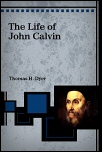
In The Life of John Calvin Dyer recounts Calvin's life, focusing primarily on authentic sources from Calvin's own writing and paying special attention to Calvin's letters throughout his life. Dyer sought to portray Calvin in his own words as much as possible, but cites other key historical works, some of which are included in this 10-volume collection, including The Life and Times of John Calvin by Paul Henry. As one of the most detailed and impartial accounts of Calvin's life, popular passages from this book have been cited numerous times in other Calvin works and biographies, proving its merit as an authentic and reliable account of Calvin's life.
Thomas Henry Dyer (1804-1888) was an English writer of history and antiquities with key works including The History of Rome (1865) and The History of The Kings of Rome (1868). His topographical works are considered his best and include Pompeii, its History, Buildings and Antiquities (1867) and Ancient Athens, its History, Topography and Remains (1873).
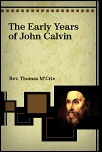
Rev. Thomas M'Crie's account of Calvin's early years—although technically a fragment because he did not live to finish it—is robust and complete for what it does offer. It includes over three hundred notes and references to more than sixty authors that were carefully and painstakingly compiled by M'Crie. His perceptive writing style offers a vivid and almost personal look into the places, people and events of Calvin's definitive years.
Rev. Thomas M'Crie (1804-1888) was a Scottish historian, writer and preacher. He overcame his humble family beginnings to become a renowned scholar and biographer of John Knox and Andrew Melville, among several other literary figures.
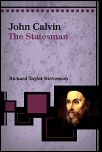
As the title suggests, Stevenson takes a rare view of Calvin as statesman, analyzing not only his theological influence, but his impact on government, legislation and organization of the Church. The prologue declares, "The most permanent contributions of Calvin's genius lay less in the line of theology than of statesmanship. Calvin cherished the belief that the Reformation could be accomplished only by regeneration, by separation and by negation . . . . His theology was derivative and less original than his polity, yet he so interpreted the former as to make the latter its logical outcome."
Richard Taylor Stevenson served as Chair of History at Ohio Wesleyan University and wrote several historical works including Growth of the Nation, 1809 to 1837, The Missionary Interpretation of History
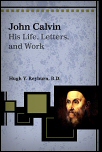
Author Hugh Reyburn offers a close look at John Calvin's life work—his impact, influences and far-reaching theology—and how it shaped the Church. This is a studious view of the history-making clash between opposing forces during the Reformation, and Calvin's role in equipping his 'army' of scholars and theologians. Reyburn follows Calvin from his early days and student life to controversies and ultimately his death, providing us a deeper understanding of the man behind the story.
Hugh Reyburn M.A., D. Phil., was Professor of Logic and Psychology at the University of Cape Town, Oxford.
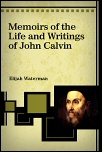
The Memoirs capture a period especially interesting to the Christian Church and are designed to exhibit the character of one of the most successful Reformers. Waterman uses mainly Calvin's Letters and Epistles as source of his facts, but also greatly references the work of Theodore Beza. Calvin's letters were selected for inclusion by which ones would most accurately portray and best illustrate the events of Calvin's life and his moral qualities. The commentary provided along with the Letters provides key insight into the historical and political impact they imparted, as well as a personal view into Calvin's heart on these matters. The volume also contains notes and biographical sketches of some of his contemporaries.
Elijah Waterman (1769-1825) was born in Bozrah, Connecticut, and was a son of a magistrate who was distinguished for his patriotism during the Revolutionary War. Prior to his graduation from Yale College in 1791, he became head of a select school, and later that year, changed to another similar school until March 1792. In 1792, he began his theological studies in New Haven and started his pastoral ministry which continued at various churches until the end of his life. He published several religious works as well as prose and poetry in several periodicals.
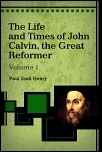
In this detailed volume chronicling John Calvin's experiences, insights, and doctrine, Paul Henry shows us the value of a "close acquaintance with this great man". (From the author's preface) The author shows us the realities of Calvin, not only his genius, but his character and practical life that previously weren't well known. Henry identifies three main acts of Calvin's life: 1) he won victory for his faith, 2) this faith framed the government and discipline of the Church, and 3) the defense of objects of the Reformation, unity of the Church, and faith and discipline.
Volume 1 of The Life and Times starts with the state of the Church at the time of Calvin's first appearance, covers his ministry in various cities, his writing of Institutes and concludes with an exhaustive look at Calvin's influence and central role in development of the Reformation.
Independent of his fame as a theologian, Calvin is one of the great historical characters of the sixteenth century. We can form, indeed, no adequate idea of that period if we leave out of our consideration the labors and actions of a man, who so materially aided the development of the all-important principles then in progress of formation.
—Henry Stebbing
Paul Emil Henry (1792-1853) was of French descent and studied in Berlin at the French College. He served for many years as pastor and seminary director of the French Church there.

Volume 2 of The Life and Times opens with the State of The Church during 1544 and 1545, and finishes with Calvin's last controversies and ultimately the circumstances of his death. The Appendix includes copies of Calvin's Liturgical Prayer and the original of the curious document which the first accuser of Servetus presented to the Council.
Paul Emil Henry (1792-1853) was of French decent and studied in Berlin at the French College. He served for many years as pastor and seminary director of the French Church there.
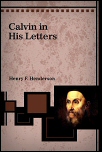
This volume looks primarily on Calvin's letters and how they teach, inspire and encourage even today. This volume has been cited by John Piper among others and provides an insight into Calvin's motivations and what helped to shape his role in the Reformation.
Henry F. Henderson wrote other works on religion and Calvinism such as Religion in Scotland and The Religious Controversies of Scotland.
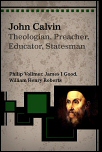
This volume was written upon the occasion of the four hundredth anniversary of Calvin's birth with the intent of increasing awareness and appreciation for the great leader of the Reformation. Aimed for popular use, Vollmer included key aspects of Calvin's work, character and historical record in such a way as to engage and intrigue laypeople and scholars alike. Although small in size, with concise language, vivid illustrations and concentration on Calvin's person and his contributions, Theologian, Preacher, Educator, Statesman succeeds in portraying a dramatic and accurate portrait of Calvin.
Philip Vollmer was Professor at Eden Theological Seminary in St. Louis, MO and also Professor of New Testament at the Central Theological Seminary in Dayton, OH. He authored several books on religion, including New Testament Sociology, The Modern Student's Life of Christ and The Reformation: a Liberating Force and Its Message to Modern America.
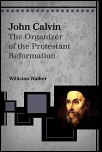
At the time of this writing, there had been a marked revival in interest in the person and work of Calvin, which lead to the mass publication of his writings. With these new resources available, Williston Walker wrote this volume in English with a limited scope, but keen focus on the far-reaching influence of Calvin. Walker placed a strong emphasis on Calvin's training, spiritual development and constructive work rather than the lesser details of his relations and the spread of the Reformation. While still offering a chronological look at his life, Walker focused on Calvin's principal controversies and the character and wide scope of his connection to the Reformation as a whole. This volume includes historical photos and illustrations of the key places in Calvin's life—where he studied, lived and preached.
Williston Walker (1860-1922) was born in Portland, ME and received degrees from Amherst College (1883), Harford Theological Seminary (1886) and Leipzig (Ph.D., 1888). While employed at Hartford Seminary and later at Yale University, Walker published several books as an American church historian from 1888-1918.
About John Calvin
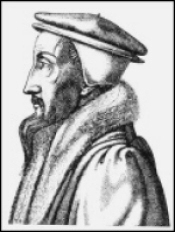
John Calvin was a theologian, pastor, biblical exegete, and tireless apologist for Reformed Christianity, and ranks among the most important thinkers in church history. His theological works, biblical commentaries, tracts, treatises, sermons, and letters helped establish the Reformation as a legitimate and thriving religious movement throughout Europe. No theologian has been as acclaimed or assailed as much as Calvin. Calvinism has spawned movements and sparked controversy throughout the centuries. Wars have been fought both to defend and destroy it, and its later proponents began political and theological revolutions in Western Europe and America. The breadth and depth of the engagement with his works since they first appeared four centuries ago—and their continuous publication since then—testifies to Calvin’s importance and lasting value for the church today. Thinking Christians from the twenty-first century who ignore Calvin’s writings do so at their own peril.
John Calvin was born on July 10, 1509 in Noyan, in France. He began his work in the church at the age of twelve, intending—at the request of his father—to train for the priesthood. Calvin attended the Collège de la Marche in Paris, before studying law at the University of Orléans in 1526 and continuing his studies at the University of Bourges. In 1532, Calvin’s first published work appeared: a commentary on Seneca's De Clementia.
On year later, he befriended Nicolas Cop, the rector of the Collège Royal in Paris. This friendship resulted in trouble for Calvin when Cop was branded a heretic after calling for reform in the Catholic Church. Cop fled to Basel, and Calvin was forced from Paris. The controversy expanded when, on the evening of October 18, 1534, anonymous attacks against the Mass were posted on public buildings, fueling the violence in the city. Calvin left France for Basel in January. The controversy, and the trouble it caused Calvin, disciplined him in his writing project, and he began working on the first edition of The Institutes of the Christian Religion, which appeared in 1536.
n June, 1536, Calvin returned to Paris as the violence subsided, but was expelled again in August of 1536. He left for Strasbourg, but was forced to Geneva instead, where he stayed at the request of William Farel. He became a reader in the church in 1537. In late 1537, Calvin fled Geneva after a controversy surrounding the Eucharist. He traveled to Basel before accepting a position at the church in Strasbourg. There, Calvin continued working on both the second edition of the Institutes and his Commentary on Romans. At the urging of his friends, Calvin married Idelette de Bure. He returned to Geneva in 1541.
Upon his arrival to Geneva, Calvin began writing prolifically. He continued his revisions to the Institutes, preached weekly, taught the Bible during the week, and delivered lectures on theology. Calvin also continued work on his New Testament commentaries.
His return to Geneva was not without controversy, however. He faced opposition from the libertines, who, in 1552, compromised his authority and nearly succeeded in banishing him from Geneva a second time. His greatest threat, however, came from his theological antagonist, Servetus. The frequent letters between Calvin and Servetus contain elements of their tenuous relationship, which were exacerbated when Servetus visited Geneva against Calvin’s orders, publicly denied the Trinity, and disgraced the church. He was condemned for heresy and executed.
By 1553, Calvin was praised for his work in uniting Geneva and securing the future of the Reformation. The church housed refugees from England—among them John Knox—who brought the Reformed faith to England. Calvin also sent more than 100 Reformed missionaries to France, and frequently corresponded with both political leaders and second generation Reformers throughout Europe. He also founded a school in Geneva, and Theodore Beza became its first rector. Calvin’s influence quickly expanded beyond the vicinity of Geneva.
During the 1550s, Calvin’s health began to decline, prompting him to undertake a final revision and expansion of The Institutes of the Christian Religion. It was published in 1559, and was immediately reprinted and translated throughout Europe. Calvin became ill in early 1564, and preached his last sermon on February 6 of that same year. His health worsened throughout the spring, and he died on May 27. Thousands flocked to view his body, forcing the council in Geneva to bury him in an unmarked grave.